
31 January 2024
By Nick Suess, Caius 1966
(Photos provided by the article writer, his wife Kate Suess, and Min Stokes)
A long time ago, I was co-opted onto the committee of The Cambridge Society of Western Australia, for the stated reason that they needed some “young blood”. I was then a mere kid of 60 years, and that “young blood” comment shows how old the rest were – my presence at 60 pulled the average age down below 70!
They were trying to think of events which might prove attractive to the younger alumni here in Perth, and as a total top-of-my-head brain-fart I suggested we challenge our Oxford counterparts to a Boat Race.
“A Boat Race?” said one of the musty oldies.
“Yes, I replied. There’s this thing they do on the Thames between Putney and Mortlake – I doubt you’ve ever heard of it.”
As a member of a rowing club located on the Swan River in an inner suburb of Perth, I thought I could at least enquire if we might negotiate a deal for the use of their boats for a few training sessions and a race. And so it was that the Swan Blues Cup was born, and first competed in November 2009.
We had an agreement with the Dark Side that, in order to give our female alumnae a chance, we would try to recruit crews of six men and two women, and indeed that was what we managed, in the Light Blue case with none to spare. Cambridge also found a cox, and in the absence of any other coach, he basically called the shots in training. By regatta time I was 61, and by no means the oldest in our crew, in fact the third oldest. And our two females, although quite young, were both tiny Asian girls. By comparison, Oxford’s oldest was a giant of a Rowing Blue still in his 40s, a Rhodes scholar originally from Queensland, and their two women were strapping Amazons. Any casual observer might have immediately concluded that they outgunned us, but this did not prevent them from always having a couple of coaches out there in a launch during training, and closely and reviewing with great intensity their video footage of each outing.
They won.
The event has continued annually ever since, and those Rhodes scholars have maintained Oxford’s strong superiority, but we did gradually find a few younger and stronger rowers, and eventually saw light blue ribbons on the trophy for the very first time in year 4, 2012, by when I had happily taken up the job of coxing.
Here is a 2012 video of the event:
To identify which crew is which, in this video and others, please remember that the good guys wear white hats! It is also worth pointing out that the Vespoli eight we rowed was the Boxing Kangaroo, which had been used by the Australian men to win silver at the Sydney Olympics, when GB narrowly won gold. The Rachmaninov accompaniment was played by our number 7, Nick Chambers, so good at multi-tasking that he can tickle the ivories while tugging an oar!
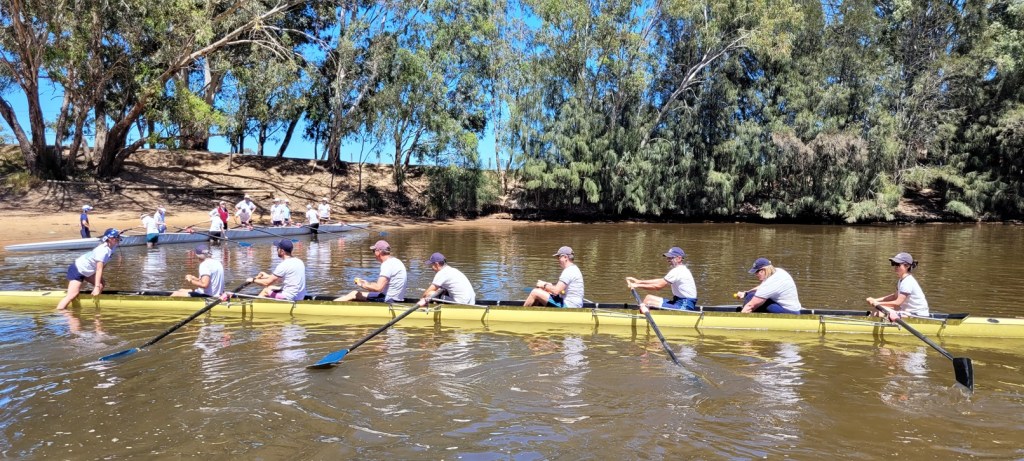
We also won in 2013, which proved to be our final season at that rowing club, as in 2014 we relocated some 11km upstream to Guildford Grammar School, who have proven to be the most excellent hosts, with wonderful facilities at our disposal. There, the river is narrower, calmer, with far less powerboat traffic, and in fact in many ways resembles the Cam – but for the presence of vineyards along its north bank. There we began to socially integrate far more with Oxford and started to train together as composite crews. The other feature that started up was our great blue bake-off. After each Sunday morning training session, we all gather to enjoy coffee and cake, and alternate which shade of blue will bake each week. Needless to say, Cambridge always has the superior offerings!
And it was from this that the ‘1829 Boat Club’ was born. The name derives from the coincidence that not only was that the year of the very first O&C Boat Race, but also of the foundation of the City of Perth.
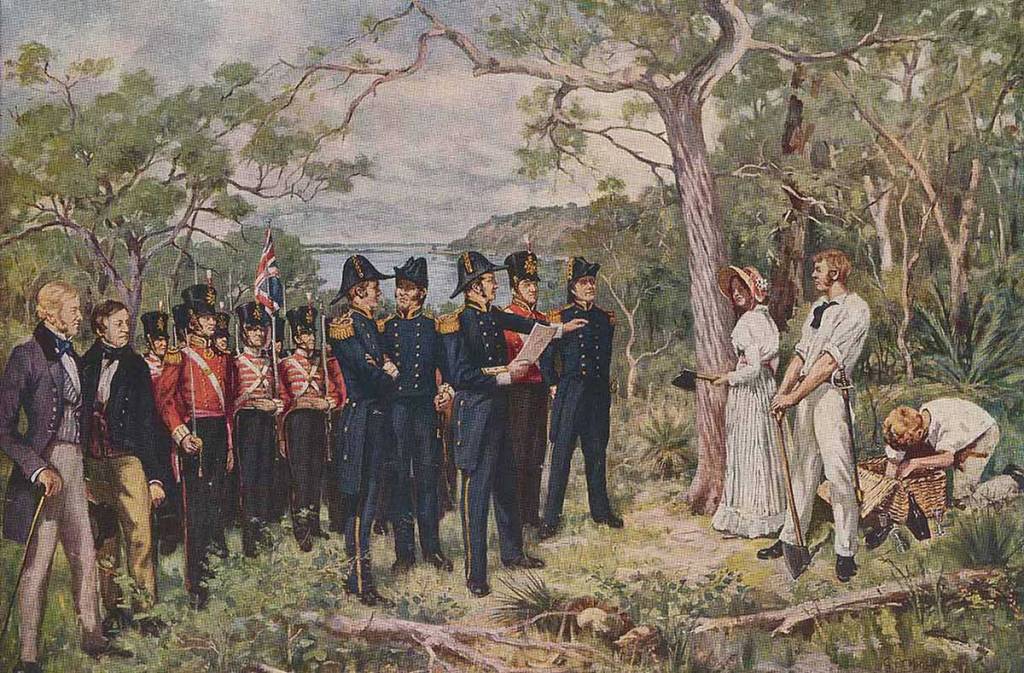
A lady named Mrs Helena Dance ceremonially wielded an axe to make the first cut in the felling of a tree, while Captain James Stirling of the Royal Navy read a proclamation to name the new capital of the Swan River Colony after the city in Scotland with which he had close family connections.

Our inaugural competition under the 1829 name was at one of the Elizabeth Quay Sprint Regattas, taking place on the new artificial lagoon of that name, which has been created right in the heart of Perth. These are twilight regattas and thanks to the modern wonder of LED lights, the boats are all lit up like Christmas trees.
We have since expanded our activities, and in March 2022 we took a squad of eleven rowers to compete at the biennial Masters Regatta in Albany, the port city on our south coast, which was the first British settlement in our state, pre-dating Perth by three years. There we combined in mix-and-match crews, and also in singles, to enter 17 events, and won two bronze medals, two silvers, and no fewer than 13 golds. We have made our mark on Western Australian rowing!
Returning to the Swan Blues, on Sunday 19th November 2023, saw the milestone event of our 15th regatta, once more at Guildford, on a fine and sunny late spring day.
For no obvious reason, the two squads have developed remarkable gender imbalances, Oxford having very few female rowers, and Cambridge altogether the reverse. We have an absolute abundance of them, and very few men. We inaugurated a women’s event some years ago, and Cambridge has dominated this, something which continued in 2023. This is competed in coxed fours, primarily because that is Oxford’s upper limit on female rowers, but Cambridge has so many that for the second year running we made it a three-lane race, with a Cambridge reserve crew also included. There were elements of tideway drama in what happened following the start, with a clash of oars between Oxford and the Cambridge reserves, although this can be blamed 100% on Oxford, who somehow steered diagonally across the course into the lane of the light blues. Both crews recovered, but by then the Cambridge first crew had a lead of a length, which they extend to two by the line. The very inexperienced Cambridge reserve crew took third place.
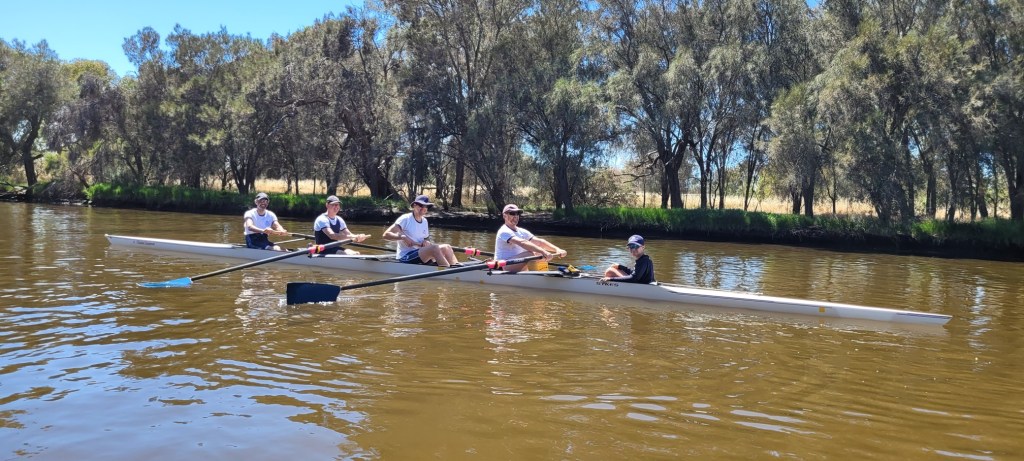
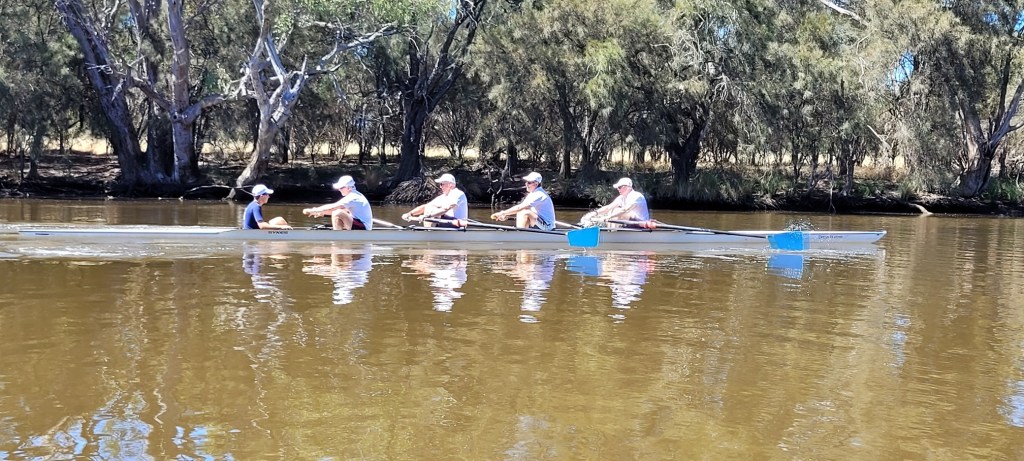
Next was Goldie v Isis, also in fours, and with most of our small contingent of Cambridge men being of advanced years, we had a Goldie crew with an average age in excess of 71! Isis was a couple of decades younger, and won.
Finally, we came to the Blue Boat race, in eights, and with our very large female contingent, Cambridge rowed with a crew of five women and three men, up against Oxford’s of two women and six men, including their Rowing Blue. If you think you can guess the result, you would be wrong!
Cambridge started at blistering pace, grabbed an early lead of half a length, and held it all the way to the line – well done, the Light Blues, especially our brilliant women!
This brought the score to 11-4 in Oxford’s favour, but where are all the young Cambridge men? Anyone reading this who fancy a visit to Perth in November, please put your hands up! I am sure we could find you accommodation and ensure you have a grand time while here.
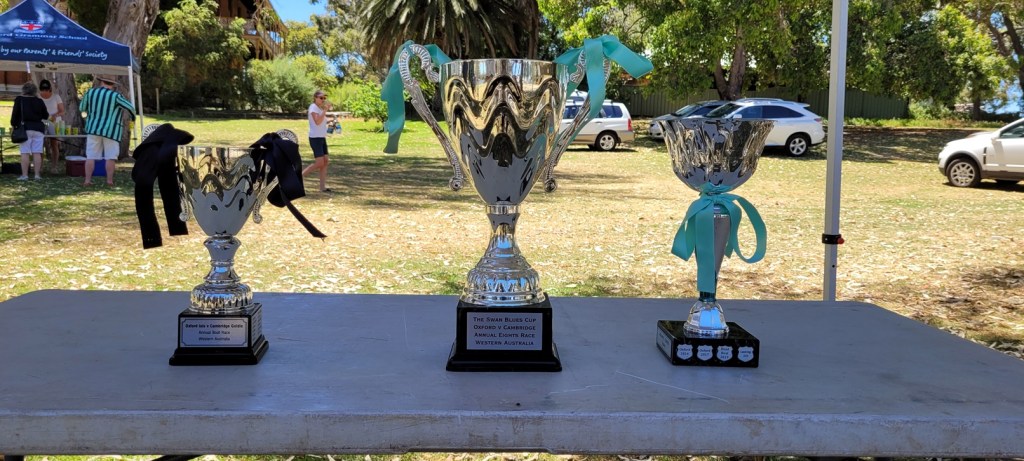
Another important activity is the ‘Duckling Club’. Due to advancing age and health issues, I can no longer endure full-on training outings, so instead through our training season I coach a school for absolute beginners, and also rowers who have not been in a boat since their distant days in a college crew, in some cases many decades ago. Last year I had two beginners of each shade of blue, and by the end of the programme was most happy to pronounce them all fully prepared and ready to row in the reserve eights. So, they experienced race conditions for the first time, and all said they’d thoroughly enjoyed the eight weeks of coaching, felt they had learnt a lot, and they want to continue rowing. This is how we replenish our numbers in the face of natural attrition after all these years, often due to alumni moving elsewhere with their careers.
And finally, after the presentation ceremony of the Swan Blues Cup, both shades of blue mingled for a shared picnic and Pimm’s party on the Guildford lawns, where our 1829 Boat Club blazers – designed by my wife Kate – were worn with great pride.

